- Joined
- Dec 13, 2015
- Messages
- 142
- Reaction score
- 483
This was our last site of our Wales adventure. To go back to the beginning, click here.
Located between Hawarden and Buckley, the woods are primarily a walking trail, it does however feature the ruins of a water corn mill.
Originally constructed in 1767 by millwright Charles Howard for Welsh landowner and politician Sir John Glynne. The mill was fed by the Broughton brook which flows to the south of the building. The construction occurred in three stages; initially a two storey sandstone structure was erected before a additional wing was added to the south and finally a third storey incorporating the entire building. Situated between the path and ruins is a 10 metre high industrial chimney, the purpose and relationship of the chimney to the mill still remain a mystery.
We arrived at the car park next to the woods in the early afternoon. Taking the path, the mill is situated around 300 yards into the trail. Being in North Wales, we are no stranger to rain and mud, so we were prepared for the ground conditions that surrounded the ruin. There are several paths down to the mill, all of which are fairly steep and very slippery when its been raining. Once down in the grounds of the building you are greeted with an amazing collection of 18th century gears that have been left to be reclaimed by nature. With the exception of the section housing the wheel and the chimney, all that now remains of the rest of the building are individual walls
Explore
This place really was the last on the list. I had seen this place on a Listed Buildings register and was intrigued by the apparently still intact water wheel. We went for a walk down river and before long this hidden gem came into view. There isn’t much left unfortunately however the gearing and wheel still remain. This place really is a ‘nature re-taking it’s woods’ kind of a place.
Here are my final pictures.
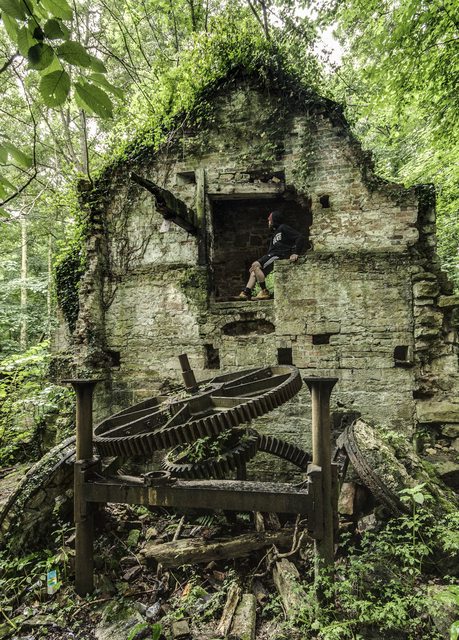
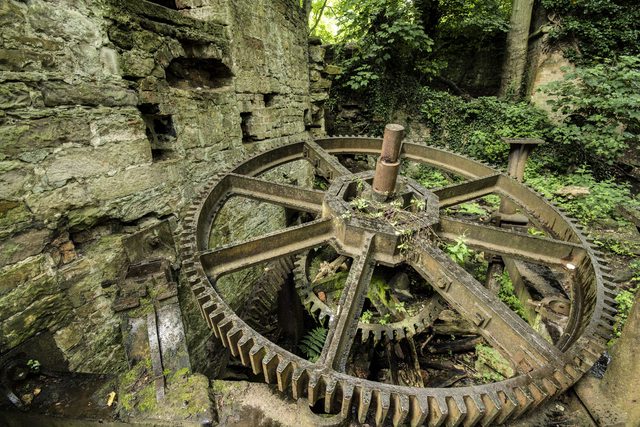
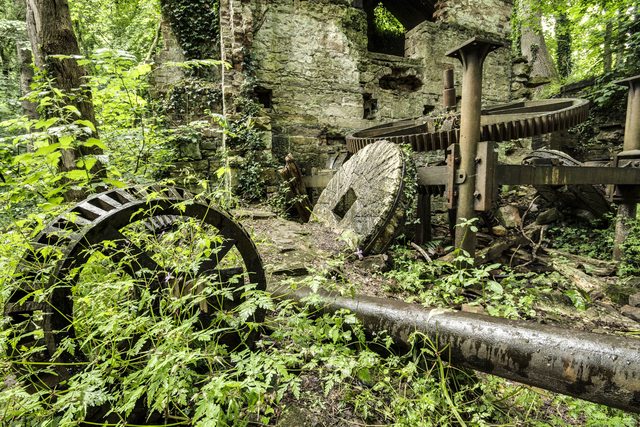
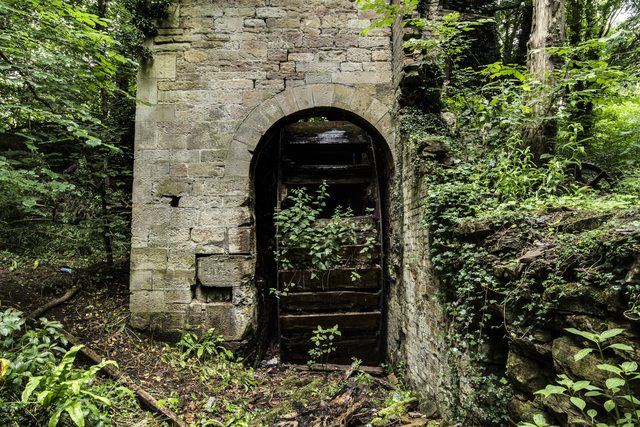
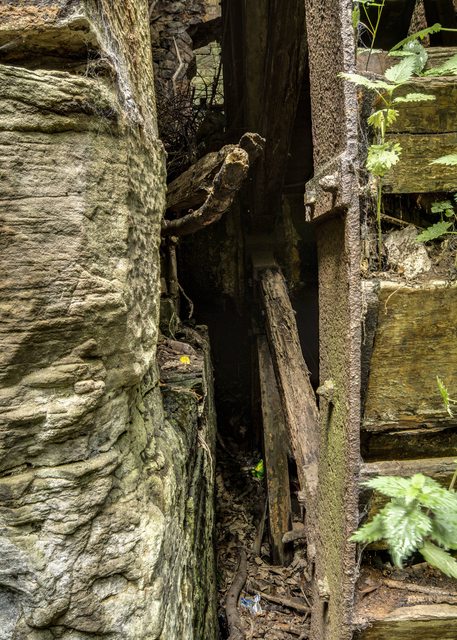
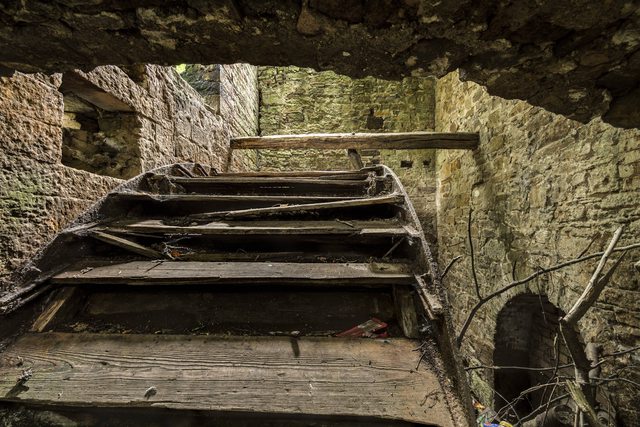
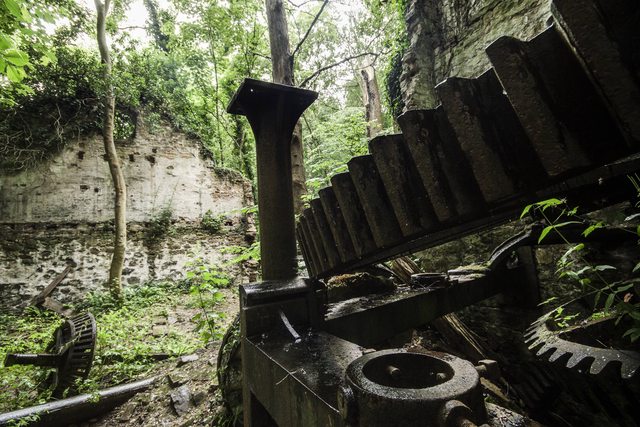
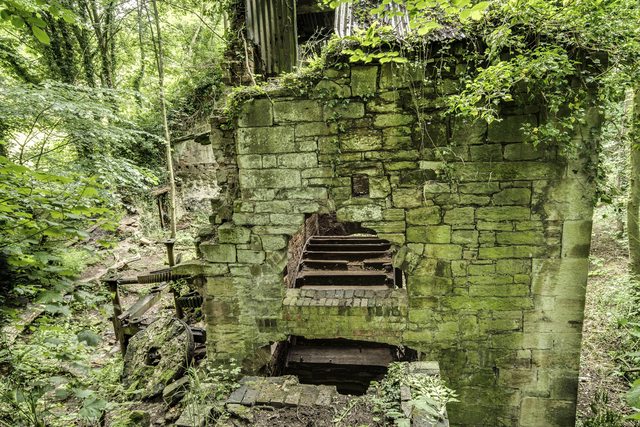
Thanks for reading through, I hope you enjoyed my reposts half as much as I did compiling them!
Located between Hawarden and Buckley, the woods are primarily a walking trail, it does however feature the ruins of a water corn mill.
Originally constructed in 1767 by millwright Charles Howard for Welsh landowner and politician Sir John Glynne. The mill was fed by the Broughton brook which flows to the south of the building. The construction occurred in three stages; initially a two storey sandstone structure was erected before a additional wing was added to the south and finally a third storey incorporating the entire building. Situated between the path and ruins is a 10 metre high industrial chimney, the purpose and relationship of the chimney to the mill still remain a mystery.
We arrived at the car park next to the woods in the early afternoon. Taking the path, the mill is situated around 300 yards into the trail. Being in North Wales, we are no stranger to rain and mud, so we were prepared for the ground conditions that surrounded the ruin. There are several paths down to the mill, all of which are fairly steep and very slippery when its been raining. Once down in the grounds of the building you are greeted with an amazing collection of 18th century gears that have been left to be reclaimed by nature. With the exception of the section housing the wheel and the chimney, all that now remains of the rest of the building are individual walls
Explore
This place really was the last on the list. I had seen this place on a Listed Buildings register and was intrigued by the apparently still intact water wheel. We went for a walk down river and before long this hidden gem came into view. There isn’t much left unfortunately however the gearing and wheel still remain. This place really is a ‘nature re-taking it’s woods’ kind of a place.
Here are my final pictures.








Thanks for reading through, I hope you enjoyed my reposts half as much as I did compiling them!
































